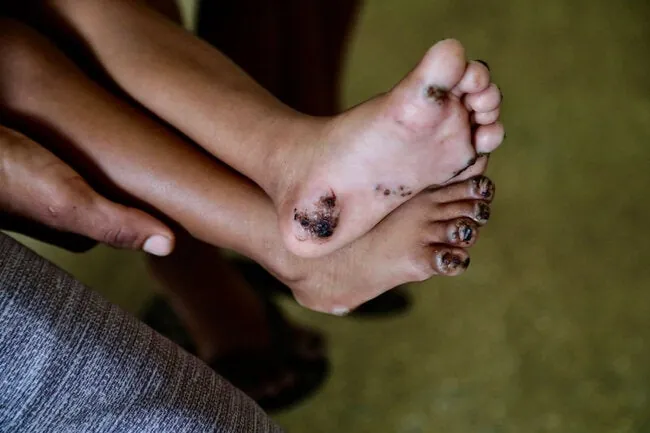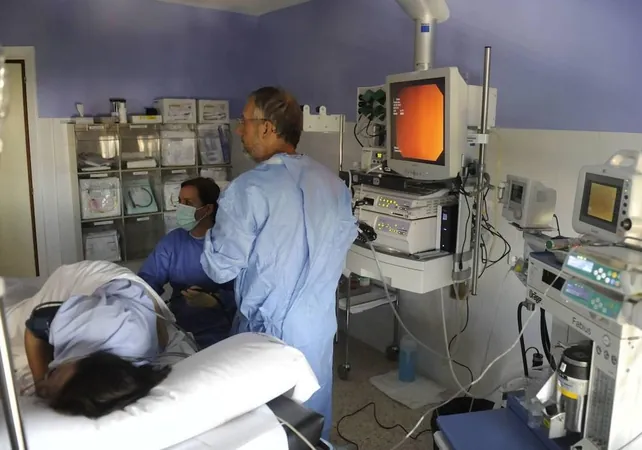
Groundbreaking Guidelines Unveiled for Tungiasis Treatment: A Lifeline for Millions
2025-09-02
Author: Wei
A New Hope in the Fight Against Tungiasis
In a landmark move, the Pan American Health Organization (PAHO) has unveiled the world’s first evidence-based guidelines aimed at treating tungiasis, a devastating parasitic disease that afflicts millions in impoverished communities across Latin America, the Caribbean, and sub-Saharan Africa.
Tungiasis, caused by the invasive female sand flea Tunga penetrans, burrows into the skin—most commonly on the feet—leading to intense inflammation, excruciating pain, and relentless itching. For many, this can escalate into severe complications such as chronic ulcers, mobility restrictions, cognitive impairments, and social stigma, particularly impacting children and the elderly.
Understanding the Disease's Impact
Thriving in extreme poverty, tungiasis often spreads in homes with dirt floors and unattended domestic animals that act as carriers. Limited access to footwear exacerbates the risk of infection, trapping affected individuals in a cycle of suffering that hampers their ability to work, study, and engage in everyday activities.
Pioneering Guidelines for Effective Treatment
The newly published guidelines, crafted by experts from PAHO and the World Health Organization (WHO), offer practical strategies to tackle tungiasis effectively. Some of the critical recommendations include:
1. Choosing Effective Treatments
The preferred treatment is low-viscosity dimethicone, which can effectively eliminate embedded fleas and minimize the risk of complications. This safe solution is applied directly to the affected lesions.
2. Resourceful Alternatives
For areas where dimethicone is unavailable, a blend of coconut oil and neem oil—a natural repellent—has been recommended as an alternative, particularly tailored for low-resource settings.
3. Avoiding Harmful Practices
The guidelines caution against the manual extraction of fleas by untrained individuals due to serious risks of secondary infections. Additionally, the use of hydrogen peroxide and potassium permanganate is advised against, as they lack efficacy and can worsen the condition.
A Call to Action from Health Leaders
Dr. Sylvain Aldighieri, Director of PAHO’s Department of Communicable Disease Prevention, Control, and Elimination, emphasizes the importance of these guidelines: "This marks a significant progress in addressing a disease that afflicts the most vulnerable. Successful implementation requires commitment from authorities, health professionals, and communities to shine a light on neglected diseases."
Strengthening Surveillance and Prevention Efforts
Alongside treatment recommendations, PAHO advocates for improved surveillance, prevention, and control strategies in the Americas. This approach encourages collaboration among human, animal, and environmental health sectors—embracing the 'One Health' model. It aims to enhance local health teams’ capacity to effectively respond to the unique challenges presented by tungiasis.
Success Stories from the Field
PAHO has documented impactful experiences from nations like Brazil and Colombia, showcasing how integrated strategies in surveillance and treatment can yield significant progress against tungiasis. These initiatives include community-based surveillance, widespread access to effective treatments, and increased efforts to improve household hygiene.
Accessing Essential Treatments Made Easier
To bolster control measures, PAHO has included dimethicone in its Strategic Fund, helping countries obtain vital medicines and supplies. This initiative is set to enhance the response to tungiasis and deliver necessary therapeutic options to those most at risk.



 Brasil (PT)
Brasil (PT)
 Canada (EN)
Canada (EN)
 Chile (ES)
Chile (ES)
 Česko (CS)
Česko (CS)
 대한민국 (KO)
대한민국 (KO)
 España (ES)
España (ES)
 France (FR)
France (FR)
 Hong Kong (EN)
Hong Kong (EN)
 Italia (IT)
Italia (IT)
 日本 (JA)
日本 (JA)
 Magyarország (HU)
Magyarország (HU)
 Norge (NO)
Norge (NO)
 Polska (PL)
Polska (PL)
 Schweiz (DE)
Schweiz (DE)
 Singapore (EN)
Singapore (EN)
 Sverige (SV)
Sverige (SV)
 Suomi (FI)
Suomi (FI)
 Türkiye (TR)
Türkiye (TR)
 الإمارات العربية المتحدة (AR)
الإمارات العربية المتحدة (AR)